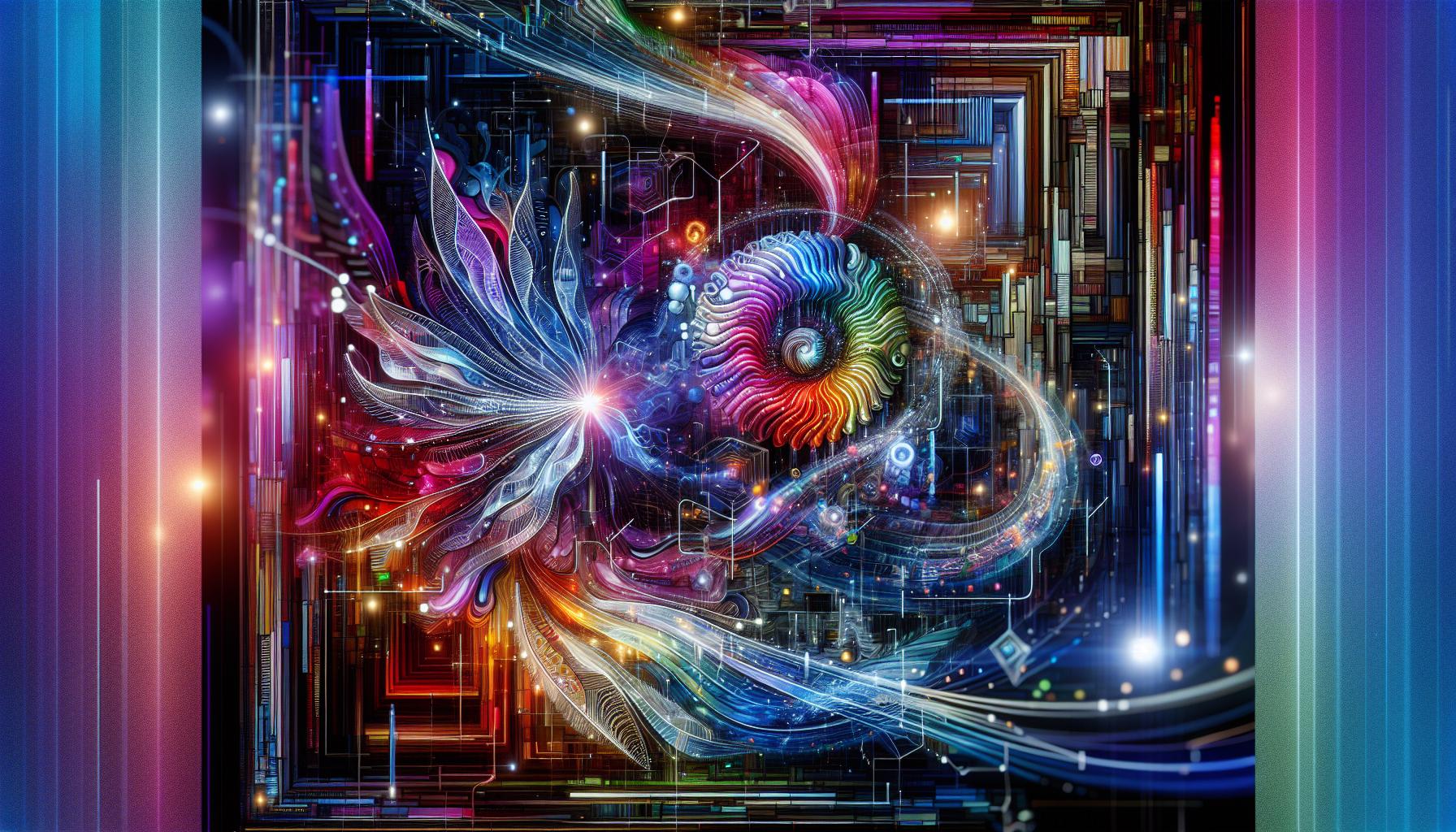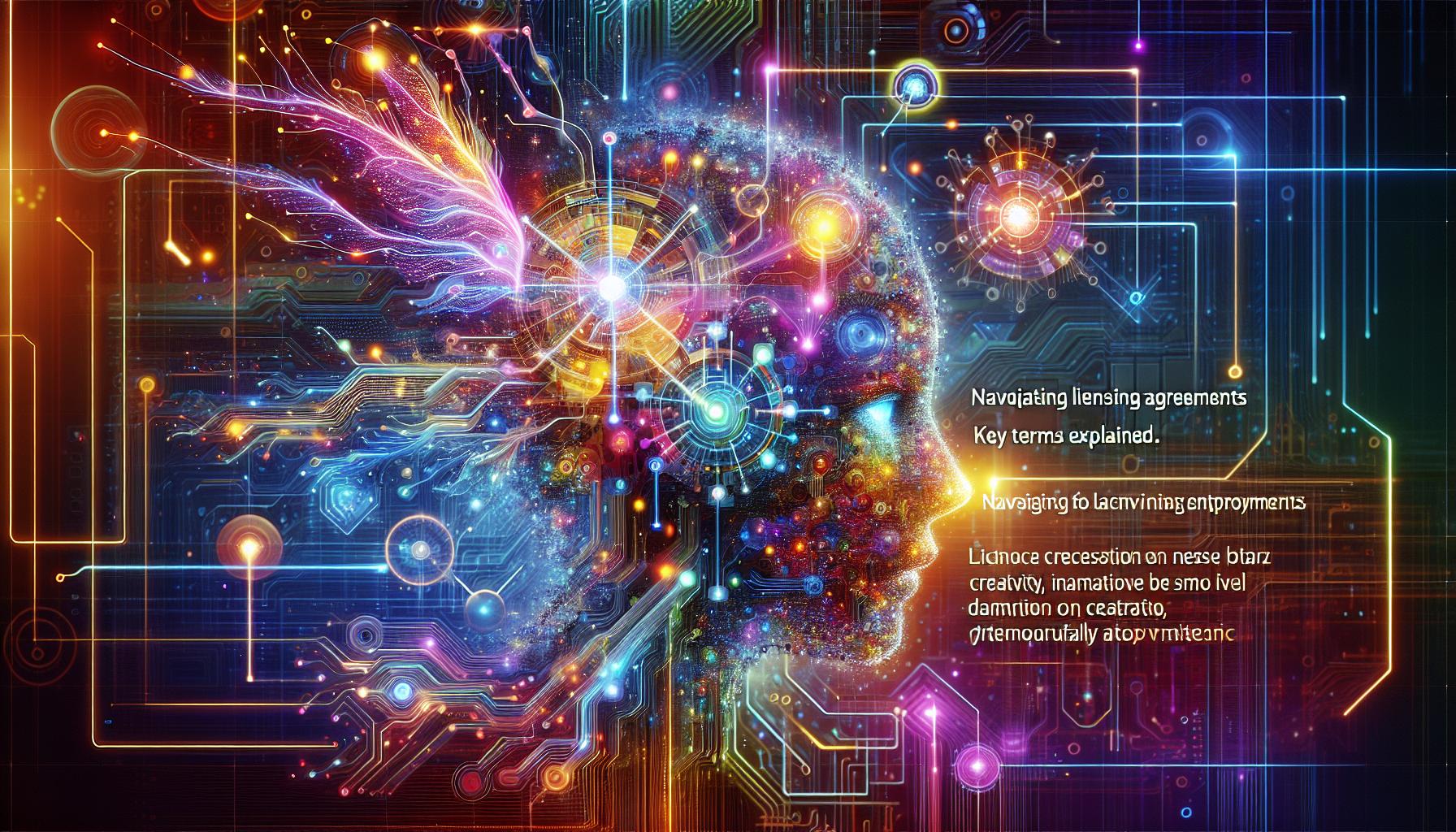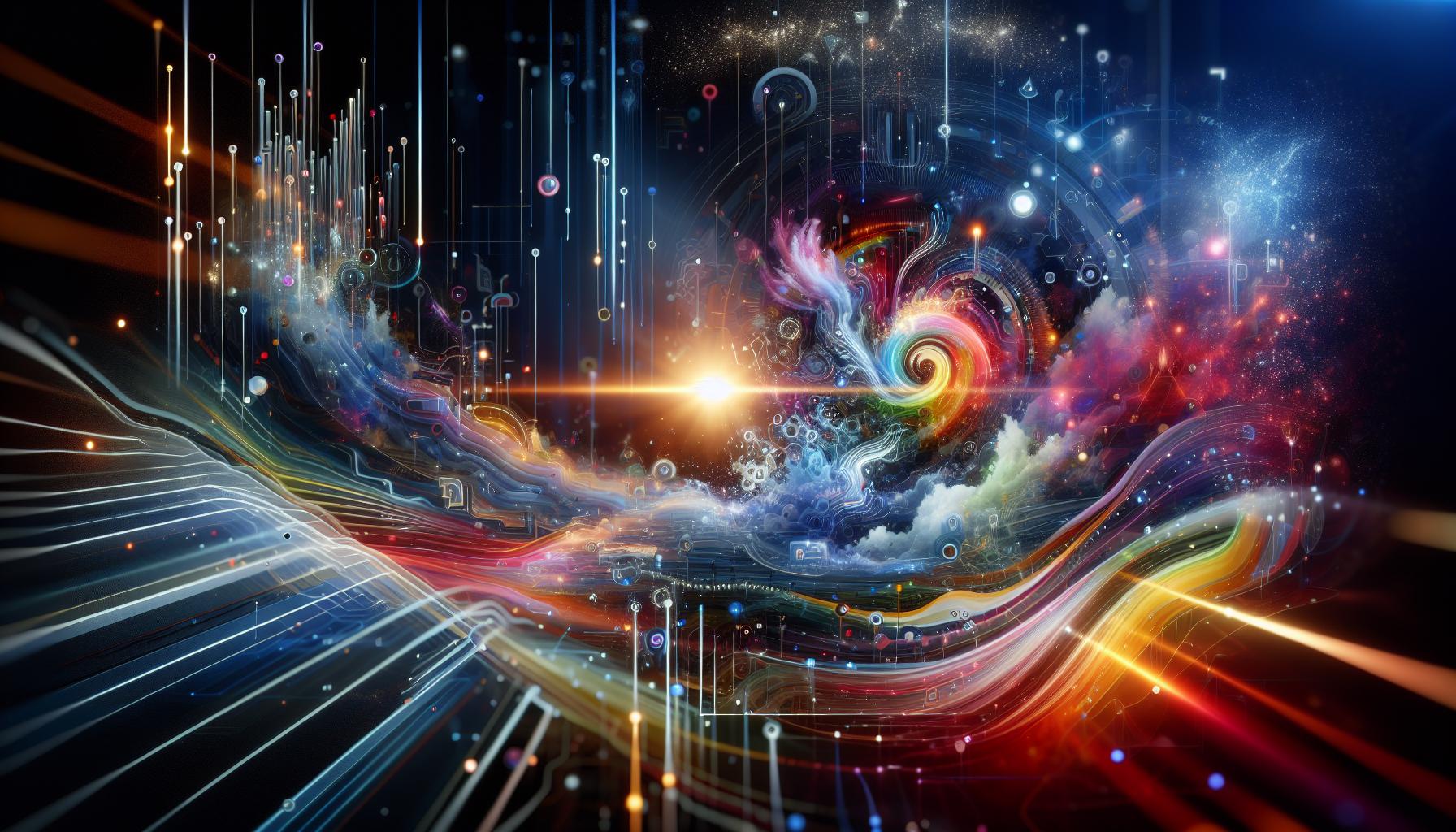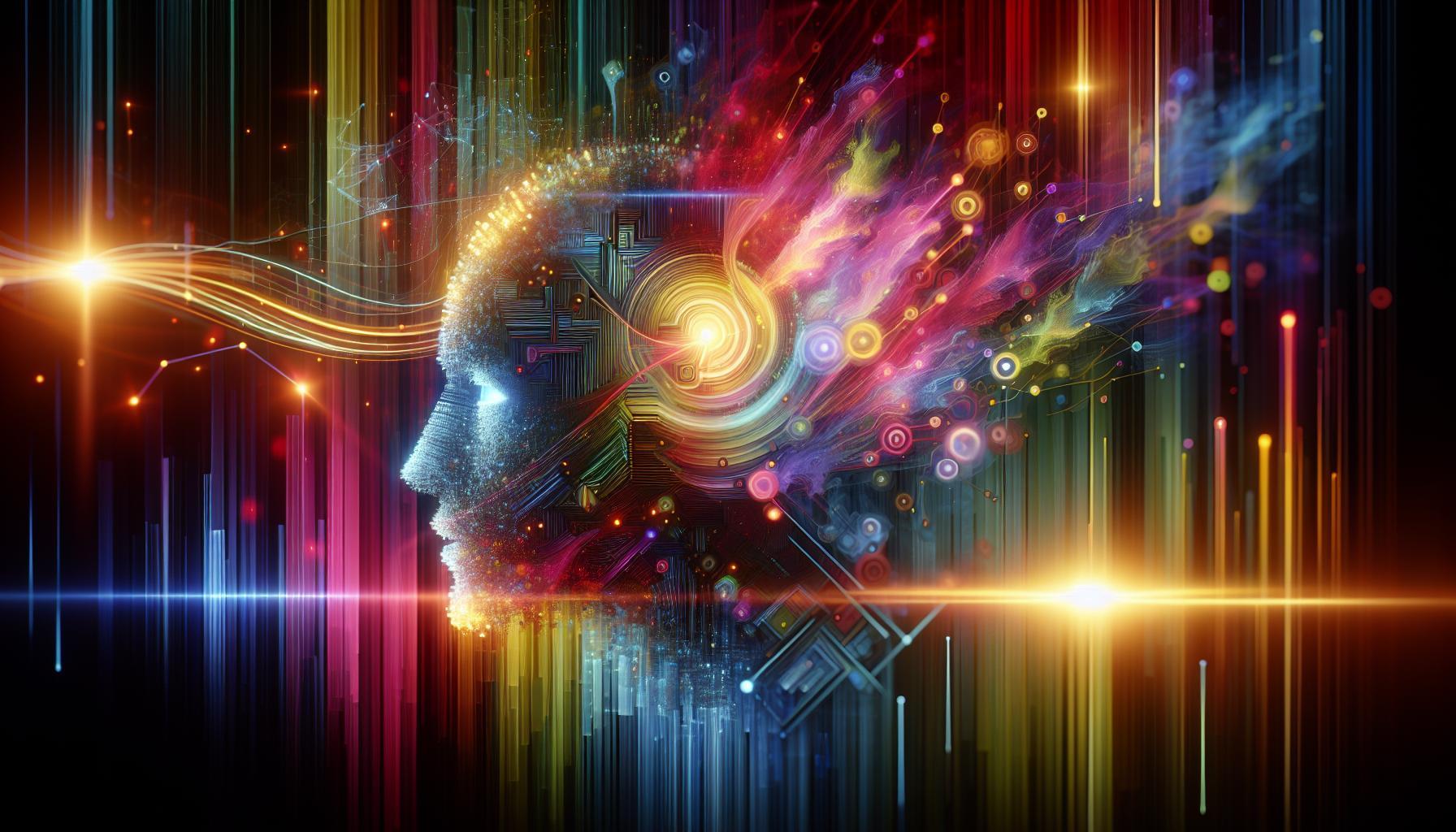As businesses increasingly turn to AI for creative solutions, a pressing question arises: can the stunning images generated by DALL-E 3 be used commercially? Understanding the legal rights surrounding these creations is essential for artists and entrepreneurs alike, ensuring they navigate the complexities of ownership and licensing with confidence. In this article, we’ll explore the commercial rights associated with DALL-E 3 and how they impact your projects.
Understanding DALL-E 3: What You Need to Know About Generated Images
In an era where creative expression is increasingly digital, understanding the legal landscape surrounding image generation tools like DALL-E 3 is essential for artists, marketers, and entrepreneurs alike. Generated images offer a wealth of opportunity, enabling creators to realize their visions with remarkable speed and efficiency. However, the question lingers: what rights do you have when using DALL-E 3 images commercially? Knowing the nuances of your legal rights can empower you to leverage these tools effectively and confidently.
When using DALL-E 3, it’s crucial to recognize that the images you generate are not bound by traditional copyright restrictions in the same way that other creative works may be. According to the guidelines set forth by OpenAI, creators own the images generated, encompassing the rights to print, sell, and merchandise these creations. This ownership applies regardless of whether the images were crafted through a free or subscription-based service, granting users significant freedom to utilize their images in various commercial contexts [3].
However, it’s vital for users to remain compliant with OpenAI’s content policies, which prohibit the generation of images featuring real persons, copyrighted materials, or politically sensitive themes. The key guidelines to remember include:
- Ensure original prompts are free from violations of copyright or trademark.
- Follow ethical practices when using generated images for marketing or commercial purposes.
- Maintain proper documentation and clarity regarding the sources of inspiration, if any.
As you navigate the use of DALL-E 3 images in your projects, consider this practical approach: Start by clearly defining how you intend to use the images-whether for social media campaigns, merchandise, or digital art-then cross-reference your plans against OpenAI’s usage policies. By understanding both your ownership rights and the boundaries set by the platform, you position yourself to maximize the potential of DALL-E 3 as a powerful ally in your creative endeavors.
Ultimately, equipped with knowledge of your legal rights and responsibilities regarding DALL-E 3 images, you can innovate without fear, creating and sharing content that captivates your audience while remaining in adherence to legal standards.
The Basics of Copyright: Who Owns DALL-E 3 Creations?

The rapid evolution of AI tools like DALL-E 3 has sparked an exciting discussion around copyright and ownership in the realm of digital creativity. As creators increasingly turn to AI for generating art, understanding who owns these creations is essential for both personal and commercial use. When discussing DALL-E 3, the critical factor lies in the legal framework that governs its outputs, particularly under OpenAI’s usage policy.
OpenAI allows users to commercially utilize images generated by DALL-E 3. This means that users can incorporate these creations into various projects, including marketing materials, product designs, and merchandise. However, it is crucial to navigate this landscape with awareness of key stipulations. For instance, users must not misrepresent the images as having been created solely by human effort; OpenAI’s terms expressly prohibit any claims that might suggest a singular human authorship of these works[[[3]](https://tokenizedhq.com/dall-e-commercial-use-copyright/).
Understanding the concept of ownership in this context can be complex. Generally speaking, users who create images with DALL-E 3 retain the copyright for those images. This ownership allows them to license, sell, or otherwise profit from the images they have generated. However, the license provided does not allow for trademark or service mark registrations specifically using DALL-E outputs. Moreover, OpenAI maintains the right to use these images for its own promotional purposes, which can add a layer of complexity for those looking to brand their work [[2]](https://myaiforce.com/bypass-dalle-3-copyright-constraints/).
Key Considerations for Commercial Use of DALL-E 3 Creations
When deciding how to use DALL-E-generated images commercially, consider the following:
- Understand Licensing: Ensure that you familiarize yourself with OpenAI’s specific licensing terms to avoid any infringement.
- Attribution: Decide whether and how to attribute the use of DALL-E 3 in your projects.
- Avoid Misrepresentation: Clearly communicate that the images were created using AI and not solely by human effort.
- Explore Market Demand: Research potential uses of AI-generated art within your industry to maximize value.
Navigating the commercial use of DALL-E 3 images requires attention to these points, ensuring compliance with OpenAI’s rights while adequately leveraging the creative potential these tools offer. By understanding the nuances of this legal landscape, creators can confidently explore and monetize their DALL-E 3 outputs.
Commercial Use Permissions: What the Fine Print Says

Navigating the landscape of commercial use permissions for AI-generated images can feel like traversing a legal labyrinth, especially when it comes to tools like DALL-E 3. Businesses and creators interested in utilizing these images often find themselves asking the critical question: what are the actual rights surrounding the use of images generated by DALL-E 3? Understanding the fine print is essential for anyone looking to leverage these innovative graphics profitably and legally.
According to the guidelines, DALL-E images created through its platform can be used commercially. This opens the door for a myriad of applications such as marketing materials, printed merchandise, book covers, and even digital content like blogs and social media posts. However, there are specific stipulations that users must keep in mind to avoid potential legal pitfalls. For instance, it is crucial not to misrepresent these images as entirely human-made, as this can lead to breaches of the terms of service [[2]](https://tokenizedhq.com/dall-e-commercial-use-copyright/).
When using DALL-E images commercially, users must also be cautious about attribution. While some platforms like Bing Image Creator require a watermark to credit the AI usage [[1]](https://answers.microsoft.com/en-us/bing/forum/all/use-of-bing-image-creator-dall-e-3-for/8e4c7102-10c3-45c9-aa9b-2bb6d4faa519), the DALL-E platform itself leans more towards granting users full rights to their created images, provided they adhere to its legal framework. Here are some vital takeaways for anyone considering the commercial use of DALL-E-generated content:
- Commercial Use Allowed: You can use DALL-E images for various commercial applications, including product design and marketing.
- Misrepresentation Prohibited: Ensure you do not claim that the images were created solely by a human.
- Attribution Requirements: Pay attention to specific platform requirements regarding image attribution, especially from services like Bing.
Understanding these guidelines ensures that you’re in compliance and can maximize the creative potential of DALL-E images in your commercial projects. As the landscape of AI and copyright evolves, staying informed on these legal aspects will not only save you from potential issues but also enhance your strategic use of AI-generated content.
Navigating Licensing Agreements: Key Terms Explained

Understanding licensing agreements is crucial for anyone interested in utilizing AI-generated content, especially images created through popular tools like DALL-E 3. As AI technology continues to evolve, so too do the legal frameworks governing how these creations can be used. For those asking, “Can I use DALL-E 3 images commercially?” knowing the ins and outs of licensing is key to ensuring compliance and maximizing use potential.
When engaging with any AI-generated images, users must first familiarize themselves with the specific terms of service associated with the platform they are using. These terms typically outline the permissions granted for both personal and commercial use. For example, while many platforms allow free use for personal projects, they may impose restrictions on commercial applications unless a proper license is secured. It’s vital to read through these details, which often clarify the scope of use, attribution requirements, and any limitations that apply to derivative works.
Key Terms in Licensing Agreements
- Commercial Use: This refers to any use of the images that is intended for monetary gain. This can include advertisements, product packaging, or any context in which the image is used to promote a business.
- Attribution: Some licenses may stipulate that users must credit the source of the images, even in commercial contexts. Understanding what is required can prevent potential legal issues.
- Derivative Works: If you plan to modify the images or create new works based on them, check whether the licensing agreement allows such alterations and under what conditions.
When considering the commercial use of DALL-E 3 images, users should also be aware of any changes in policy by the service provider. For instance, as noted in discussions around Microsoft’s Bing Image Creator, there may be restrictions on commercial use that require users to acquire specific licenses for their images[[[3]](https://answers.microsoft.com/en-us/bing/forum/all/use-of-bing-image-creator-dall-e-3-for/8e4c7102-10c3-45c9-aa9b-2bb6d4faa519). It’s always wise to stay updated on the latest terms, as they can impact your ability to create revenue-generating projects based on this technology.
Ultimately, understanding and navigating licensing agreements effectively paves the way for the successful integration of DALL-E 3 images into your commercial ventures. By ensuring that you adhere to the terms laid out by the image generator services, you can leverage these innovative assets without the threat of potential legal repercussions.
Real-World Examples: Successful Commercial Uses of DALL-E 3 Images

With the rise of AI-generated content, businesses are exploring innovative ways to leverage tools like DALL-E 3 to enhance their branding and marketing strategies. The capability to create original images that can be used commercially opens up exciting opportunities for entrepreneurs and marketers to set themselves apart in a crowded marketplace. From digital art to unique product visuals, the applications for DALL-E 3 images evidence the vast potential of AI in commercial use.
Many companies have successfully integrated DALL-E 3 images into their marketing campaigns, illustrating the diverse possibilities afforded by this technology. For instance, a small online fashion retailer utilized DALL-E 3 to generate visuals for a seasonal advertising campaign, producing stunning images of models in imaginative, never-before-seen outfit combinations. These images not only drew attention but also resulted in a significant boost in engagement on social media, as potential customers were intrigued by the creative interpretations of fashion.
Moreover, businesses in the publishing industry have harnessed the power of DALL-E 3 to create eye-catching book covers. An independent author transformed their marketing strategy by using DALL-E 3 to visualize their book’s themes and characters, resulting in a visually compelling cover that resonated with their target audience. This unique imagery helped differentiate the book from others on crowded shelves, making it more appealing to potential buyers.
Additionally, marketing agencies are incorporating DALL-E 3’s capabilities into their client projects to produce custom graphics for presentations, advertisements, and websites. By generating tailored content that reflects a client’s brand personality, agencies can provide a unique touch that standard stock images simply cannot offer. This approach not only saves on costs but also ensures that the imagery aligns perfectly with the brand’s message, thus enhancing the overall effectiveness of the marketing campaign.
In summary, leveraging DALL-E 3 images commercially is not only possible but is being realized by a variety of industries in innovative ways. These real-world examples highlight the tool’s versatility and efficacy, supporting businesses in their quest for differentiation and improved engagement in an increasingly competitive environment.
Ethical Considerations: Balancing Creativity and Compliance
The advent of AI-generated imagery, particularly with tools like DALL-E 3, brings forth an exciting yet complex landscape where creativity intersects with ethical considerations. As individuals and businesses ponder the question, “Can I Use DALL-E 3 Images Commercially? Legal Rights Explained,” it becomes imperative to balance the innovations in digital art with the responsibility that comes from its usage. This balance not only fosters artistic expression but also ensures compliance with ethical norms and legal frameworks.
One of the core ethical issues surrounding AI-generated content is the potential for misuse. While DALL-E 3 allows for remarkable levels of creativity, its capability also raises questions about the implications of creating inappropriate or harmful content. OpenAI has implemented strict content censorship measures to mitigate these risks. This prudent approach reflects a commitment to promoting safe and respectful usage of its technology, indicating that the boundaries of creative freedom and social responsibility are critical in determining how these images can be utilized commercially [[2]].
To navigate these ethical waters effectively, content creators and businesses should consider the following:
- Understand the Licensing Terms: Each AI image generator comes with specific licensing agreements that outline how the images can be used. Familiarize yourself with DALL-E 3’s terms to avoid legal complications when using images for commercial purposes.
- Respect Cultural Sensitivities: Consider the cultural implications of the imagery you create. Being mindful of how images might be perceived by different communities can help prevent unintentional harm.
- Avoid Misrepresentation: Using AI-generated images in a manner that could mislead consumers about the nature or authenticity of your product can lead to ethical breaches and legal issues.
- Prioritize Transparency: When using AI-generated images for advertising or promotional purposes, be transparent about the origin of the content. This can help build trust with your audience while adhering to ethical marketing practices.
Maintaining this equilibrium between creativity and compliance ensures that the incorporation of AI-generated images into commercial projects is not only legally sound but also ethically responsible. As the landscape for AI-generated art continues to evolve, remaining informed and conscientious will be crucial for all stakeholders involved in this burgeoning field. By addressing these ethical considerations strategically, creators can leverage tools like DALL-E 3 effectively while championing a responsible approach to digital art.
Tips for Using AI-Generated Images Legally and Effectively
Using AI-generated images can be an innovative way to enhance your creative projects, but understanding the legal framework surrounding their use is essential to avoid complications. With the rise of AI tools like DALL-E 3, many are eager to know about the commercial rights associated with these unique creations. Since copyright laws regarding AI-generated content remain murky, positioning yourself with the right knowledge will ensure your use of these images is both legal and effective.
Understand Copyright and Ownership
Before diving into how you can utilize AI-generated images, it’s crucial to grasp the basics of copyright law as it pertains to AI. According to recent developments, such as the U.S. Copyright Office’s ruling that AI-generated works cannot claim copyright unless there is sufficient human involvement, creators must be proactive in determining how much creative input is needed for their works to be eligible for copyright protection [[[3]]. When employing DALL-E 3 images for commercial use, ensure that your involvement in the creation process qualifies as ‘sufficient’ under current legal standards to protect your rights to that image.
Document Your Creative Process
Keeping a detailed record of your creative process will not only help clarify your rights but also serve as a safeguard against potential disputes. This documentation can include screenshots of the prompts you used, drafts of your ideas, and any modifications made to the AI-generated images. By establishing a clear timeline of your engagement with the DALL-E 3 tool, you can build a stronger case for your claim to ownership and the legality of your commercial use.
Consider Licensing Requirements
Always verify if the specific platform or tool you’re using to generate your images has unique licensing agreements that dictate how the outputs can be used. For instance, OpenAI’s terms of service may specify whether DALL-E 3 images can be used commercially or if any attribution is necessary. Compliance with these terms is vital, as breaching them could result in revocation of your rights to use these images commercially.
Seek Legal Advice When in Doubt
Given the evolving nature of AI and copyright law, consulting with a legal expert who specializes in intellectual property can be invaluable. They can provide tailored advice based on your specific project and help you navigate the complexities of using DALL-E 3 images commercially. Taking this precaution can save you from potential legal pitfalls and ensure that your use of AI-generated content aligns with current laws.
By following these guidelines, you can confidently use DALL-E 3 images for your projects while staying compliant with the ever-changing legal landscape surrounding AI-generated content.
Faq
Can I Use DALL-E 3 Images Commercially? Legal Rights Explained?
Yes, you can use DALL-E 3 images commercially. OpenAI allows users to retain full ownership of the images they create, giving you the right to sell, modify, and distribute these images.
This flexibility means that you can incorporate DALL-E 3 images into your products, marketing materials, or any commercial projects without worrying about copyright issues. However, it’s important to recognize that intellectual property laws may still apply depending on the context and use of the images. For further details, check OpenAI’s documentation on DALL-E API usage.
What Are the Limitations on Using DALL-E 3 Images Commercially?
While you can use DALL-E 3 images commercially, it’s essential to abide by OpenAI’s usage policies. These policies prohibit any use of generated images that promotes harmful content or misinformation.
Additionally, while you can sell or distribute these images, you should avoid creating derivatives that could infringe on existing copyrights. Always ensure that your use aligns with ethical guidelines and respect for others’ work.
How Do I Properly Credit DALL-E 3 Images if I Use Them Commercially?
OpenAI does not require attribution for images generated with DALL-E 3, but it is good practice to credit the tool in some way, especially in commercial uses. You might say, “Image created using DALL-E 3 by OpenAI.”
This can enhance your credibility and transparency with consumers, showing them the innovative tools behind your creations while also promoting responsible use of AI technologies.
Why Does OpenAI Allow Commercial Use of DALL-E 3 Images?
OpenAI promotes innovation and creativity by allowing commercial use of DALL-E 3 images. This policy encourages users to explore new avenues in art, design, and business.
By providing ownership rights, OpenAI fosters a collaborative environment where creators can develop their ideas without the fear of infringing on copyrights, thus empowering users to innovate freely.
Can I Modify DALL-E 3 Images for Commercial Projects?
Absolutely! You can modify DALL-E 3 images for your commercial projects. OpenAI grants users the right to alter, adapt, and build upon the original images.
This feature allows for creative flexibility, making it easier to tailor the generated art to fit your specific needs, ensuring that the final product aligns with your brand or project vision.
Are There Any Specific Legal Issues to Consider When Using DALL-E 3 Images?
While you have broad rights to use DALL-E 3 images, be cautious of potential legal issues. Ensure that your use does not breach any existing copyrights or trademarks.
It’s advisable to consult with a legal professional if you plan significant commercial use to clarify any complex issues related to IP rights and protect yourself from unintentional infringements.
How Can I Learn More About DALL-E 3 and Its Usage Rights?
For detailed information about using DALL-E 3 images and understanding your legal rights, you can visit the OpenAI official documentation page. This is the best resource for guidelines and best practices regarding image creation and usage.
By understanding these rights, you can better plan how to integrate DALL-E 3 images into your creative projects, ensuring compliance and enhancing your commercial endeavors.
Insights and Conclusions
In summary, using DALL·E 3 images commercially is not just a possibility; it’s a right granted to users. Whether you generate images via free or paid credits, you own the creations and can reprint, sell, and merchandise them without restriction. This invites a wealth of creative opportunities, from marketing campaigns to product designs, empowering users to leverage AI-generated visuals in diverse ways.
Embrace these capabilities and explore the vast potential of DALL·E 3 for your projects. As you dive into the world of AI image generation, consider experimenting with different styles and techniques to enhance your creative arsenal. The process not only fuels innovation but also cultivates a deeper understanding of how AI tools can transform your visual storytelling. Unlock the power of AI today-your next masterpiece awaits!





